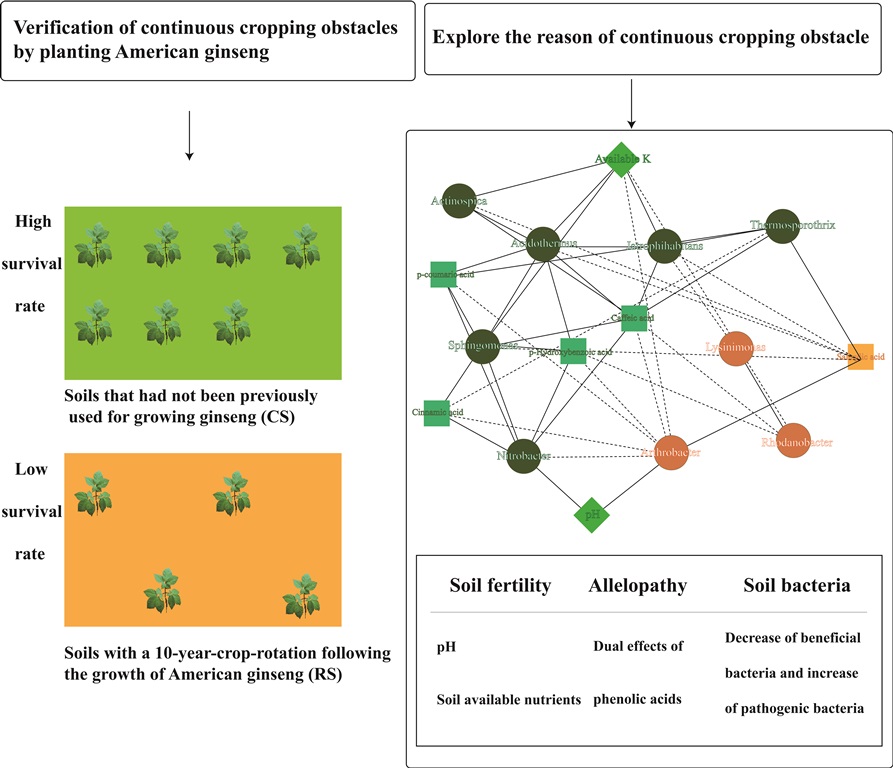This study aims to verify the time-variant feature of American ginseng (AG) continuous cropping obstacles and to explore the factors impeding continuous cropping. We verified the feature with a plant-soil feedback pot experiment and then investigated the factors by comparing the properties of control soils that had not been previously used for growing ginseng (CS) with those of soils with a 10-year-crop-rotation cycle following the growth of AG (RS). It’s found that the survival rate of AG in RS was lower than that in CS. The RS had lower pH, available potassium content, and urease activity. Additionally, p-coumaric, p-hydroxybenzoic, vanillic, caffeic, and cinnamic acid levels were lower in RS than in CS, but salicylic acid levels showed the opposite pattern. RS had higher Rhodanobacter and lower Acidothermus, Sphingomonas relative abundances in bacterial community. It’s also found that many bacteria were substantially correlated with phenolic acids and soil physiochemical properties. Results indicate that even after 10-year crop rotation, the negative effects of prior continuous cropping of AG has not been eliminated. The growth of AG can be affected negatively with deterioration of soil physicochemical properties and with lower levels of phenolic acids which promote pathogen reproduction. Probiotics reduction also weighs. Moreover, biotic factors are interrelated with abiotic ones. Therefore, it can be inferred that the comprehensive change of soil properties is the main obstacle for continuous cropping.

